ZKONG’s electronic shelf labels and digital signage streamlined a major warehouse’s operations, reducing labor costs by 25% and improving inventory accuracy with real-time updates and automated stock management.



IoT warehouse solutions, including ESL in warehouse and digital signage, offer transformative benefits for various stakeholders within the warehouse environment. From warehouse managers to workers and beyond, these technologies enhance efficiency, accuracy, and communication.
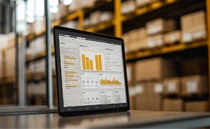
IoT solutions like ESL and digital signage can provide real-time data on inventory levels, order statuses, and operational metrics, which can finally realize Inventory Management Improvement and Streamlined Communication.
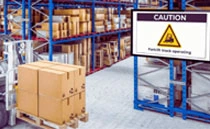
Digital signage in warehouses can display real-time information on order statuses, picking routes, and task assignments. This helps workers stay organized and efficient, reducing downtime and errors.
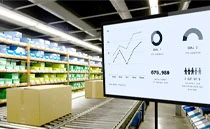
IoT warehouse solutions enable better communication and collaboration. Real-time data sharing ensures that all parties have access to the same information, reducing misunderstandings and delays.
Digital signage is another powerful tool transforming warehouse management. These dynamic displays can be strategically placed throughout the warehouse to provide real-time information, improving communication and operational efficiency.
Key Benefits of Digital Signage in Warehouses:
Real-Time Communication: Digital signage for warehouses can display real-time data on inventory levels, order statuses, and other critical information. This ensures that warehouse staff are always informed and can make quick, informed decisions.
Improved Safety: Safety is a top priority in any warehouse. Warehouse digital signage can be used to display safety protocols, emergency procedures, and real-time alerts, helping to create a safer working environment.
IoT Integration: Like ESLs, ZKONG digital signage can be integrated with other IoT warehouse solutions. For example, digital displays can show data from IoT sensors, such as temperature and humidity levels, helping to maintain optimal storage conditions.
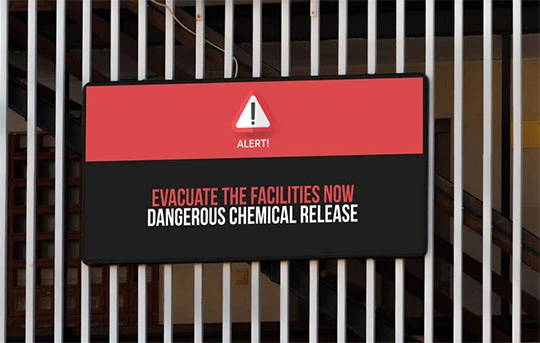
In the fast-paced environment of modern warehouses, efficiency and accuracy are paramount. Electronic Shelf Labels (ESL) have emerged as a game-changer in inventory management. These digital tags replace traditional paper labels, offering real-time updates and seamless integration with warehouse management systems (WMS).
Key Benefits of ESL in Warehouses:
Real-Time Updates: ESLs are connected to the warehouse’s central database, allowing for instant updates on stock levels, product information, and pricing. This ensures that warehouse staff always have the most current information, reducing errors and improving efficiency.
Enhanced Accuracy: Manual labeling is prone to human error. ESLs eliminate this risk by automating the labeling process, ensuring that the right information is always displayed.
IoT Integration: ESLs are a crucial component of IoT warehouse solutions. They can communicate with other smart devices, such as RFID scanners and automated picking systems, to streamline operations further.
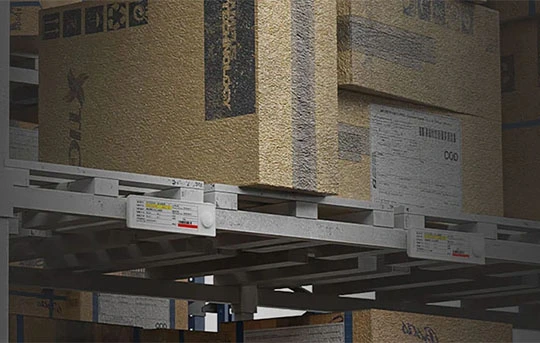
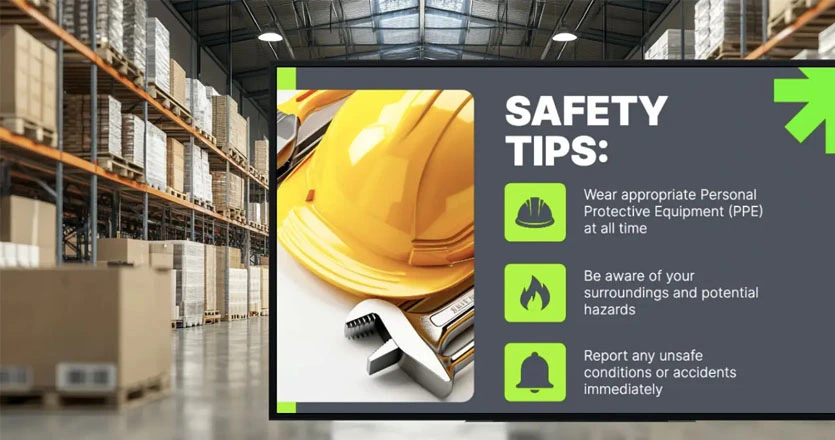
ZKONG warehouse IoT solutions including warehouse ESL, warehouse digital signage and ZKONG software.
Warehouse digital signage involves the use of strategically positioned electronic displays within storage facilities to convey real-time information, updates, and instructions to employees. Unlike traditional printed signs that require frequent replacement, warehouse digital signage systems can instantly disseminate crucial updates across multiple screens simultaneously, ensuring all staff are well-informed and can efficiently navigate large, complex areas.
Just apply ZKONG warehouse ESLs to the storage shelf, easily realize the cloud storage operation, cloud shipping, cloud inventory, cloud warehouse. The inventory information can be uploaded to the cloud and managed online to improve the sorting efficiency, reduce the labor intensity of operators, reduce the error rate, reduce the number of employees, improve the distribution efficiency, effectively control and track the whole process of logistics and cost management of warehouse business. In the sorting and distribution of scattered goods, it has advantages that cannot be compared with other sorting methods.
This immediate access to accurate inventory data reduces the likelihood of stock discrepancies and overstocking or understocking situations. Warehouse IoT solutions ensures that warehouse managers can make informed decisions based on current inventory levels, leading to more efficient use of warehouse space and resources.
The automation capabilities of ZKONG smart warehouse IoT solution significantly streamline warehouse operations, minimizing the need for manual labor. By automating tasks such as stock updates, price changes, and inventory audits, warehouses can operate more efficiently and with fewer errors.
With ZKONG’s IoT in warehouse management, warehouses can achieve faster and more accurate order fulfillment. The real-time inventory management capabilities allow for quicker picking and packing processes, as workers can easily locate items and verify stock levels. This efficiency in order fulfillment leads to shorter lead times and more timely deliveries to customers.
The rapidly changing retail market has been significantly propelled by advancements in connectivity and mobility. Enhanced and more dynamic internet capabilities have led to a surge in mobile devices, creating a new generation of consumers. These modern consumers possess the purchasing power and the ability to buy almost anything with just a push of a button or a swipe of a finger.
Moreover, these markets have transcended geographical boundaries, receiving orders from multiple locations worldwide. To meet the demands of these global consumers, businesses have expanded their warehousing operations with larger facilities or additional warehouses in various locations.
While these trends suggest a positive market outlook, there are notable challenges, particularly in industrial warehousing operations and maintaining proper inventory control and management. If these challenges are not addressed, the entire supply chain could be disrupted, leading to significant order fulfillment and delivery issues.
To prevent such problems, businesses and warehouse managers are seeking ways to optimize inventory control and management. This includes developing better workflows, leveraging computer-based or automated systems, and utilizing innovative IoT warehouse solutions.
One such innovation is the use of Electronic Shelf Labels (ESLs). Although the concept of ESLs is not new and has been applied in various retail and warehousing contexts, adoption has been slow. This slow uptake can be attributed to several factors, including limited budget allocations and a perceived low return on investment (ROI).
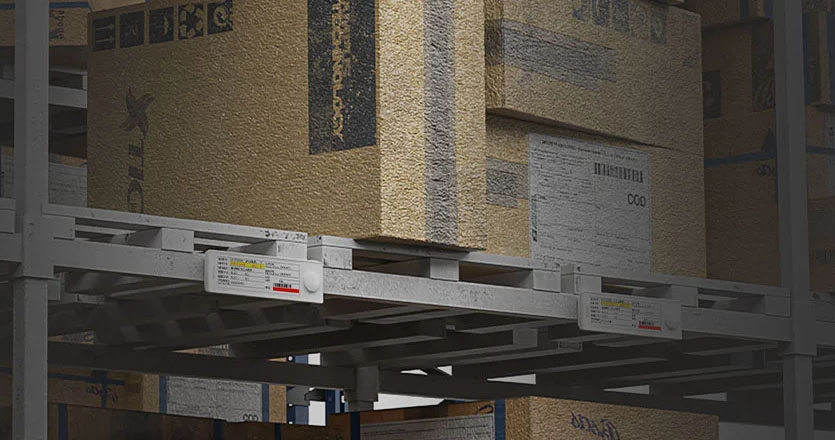
The primary idea behind ESL warehouse is to create a more dynamic and appealing way to display pricing, serving as an upgrade from traditional paper labels. With advancements in wireless technology and computer systems, the functionality of ESL in warehouse has expanded significantly beyond just price display.
Leading companies have embraced ESL warehouse to enhance warehouse inventory control and management. These businesses have seen substantial benefits from using ESL in warehouse, including:
In modern digital warehouses, electronic shelf label system is integrated into a centralized network that includes base stations and either local or centralized servers. This setup is connected via a wireless network, enabling seamless communication between the central system and various inventory management tools such as ESLs, RFIDs, and IoTs.
Depending on the scope of the centralized system, ESLs can be used as intuitive and interactive labels for racks, shelves, and bins, or even down to the individual item level. Research indicates that warehouses implementing item-level tagging have achieved inventory accuracy rates between 63% and 95%.
Surprisingly, up to 43% of small businesses in the US still manage their inventory manually or not at all. This can negatively impact their warehouse operations, particularly in terms of inventory accuracy and their ability to make accurate forecasts and plans.
An automated inventory and warehouse management system utilizes reliable software integrated into a central data center. This system incorporates RFID systems, electronic shelf tags, ESL accessories and other connected tools, resulting in quick and accurate inventories that can be updated in real-time.
Implementing an automated system can optimize overall warehouse operations, including product workflows, staff movement, and real-time inventory information. IoT warehouse solutions leads to significant reductions in labor and operational costs, fewer inventory and delivery errors, improved order fulfillment cycles, increased sales, and higher profits.
Digital signage offers a versatile and efficient solution for streamlining information dissemination and tackling common operational challenges in warehouses. By providing clear and visible displays, it reduces the time employees spend searching for products or locations, thereby significantly boosting efficiency. Additionally, warehouse digital signage acts as a central communication hub, displaying emergency alerts, task updates, and workflow instructions to keep employees informed and adaptable. This leads to a safer, more organized environment with fewer errors and delays.